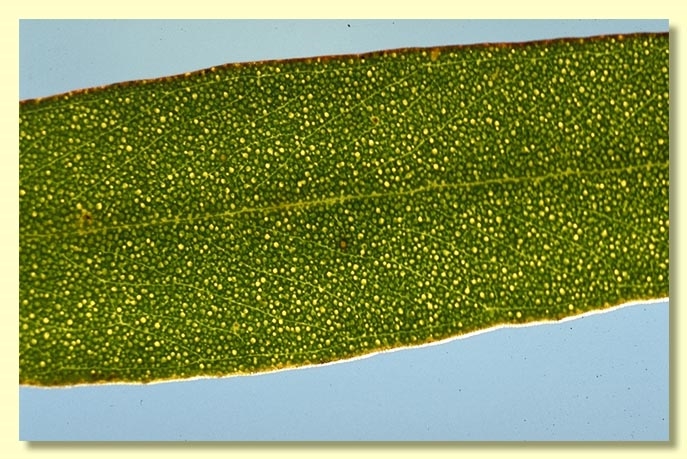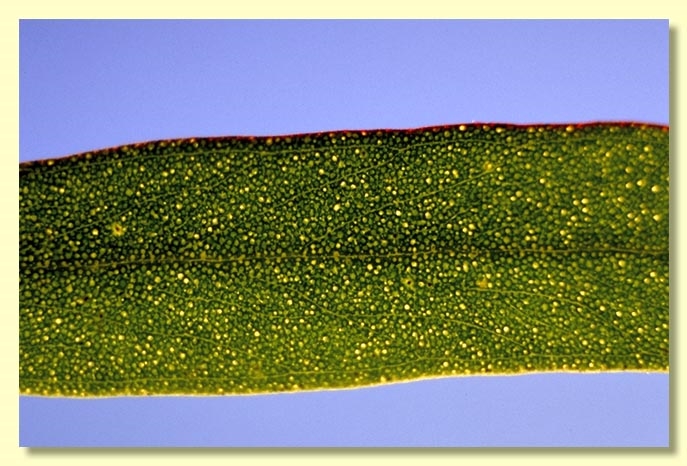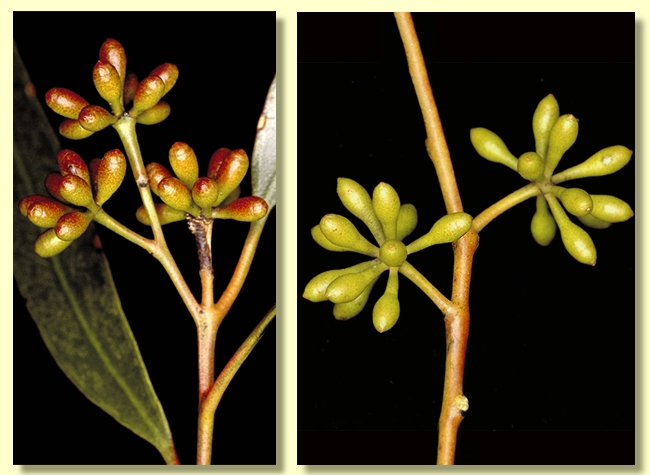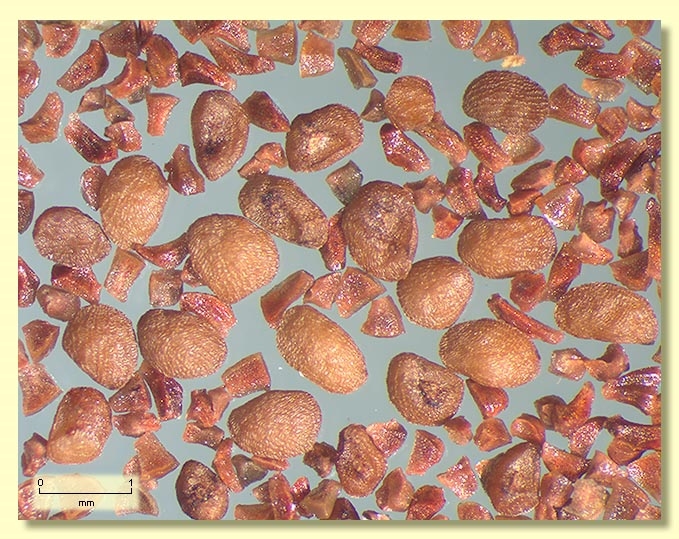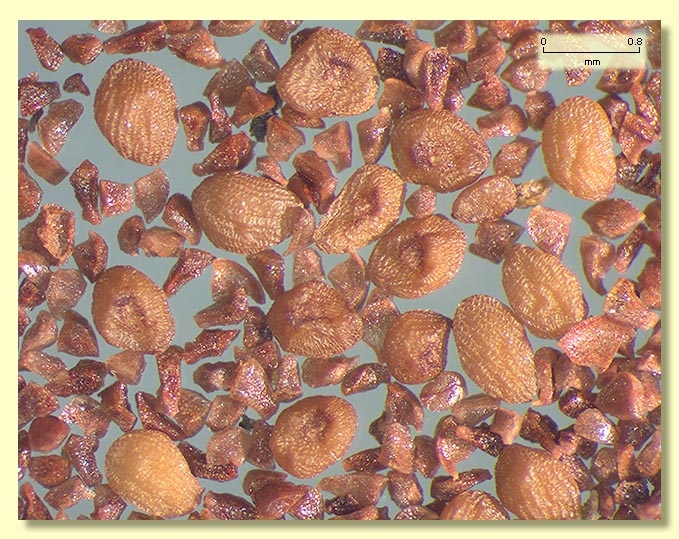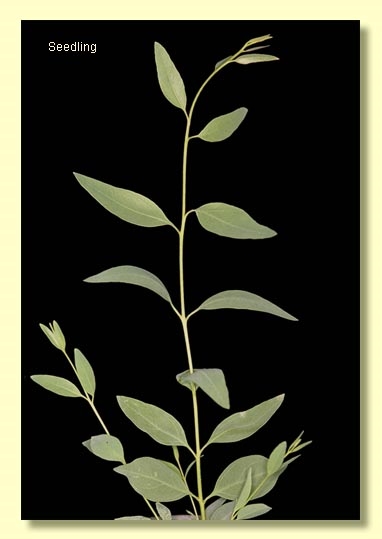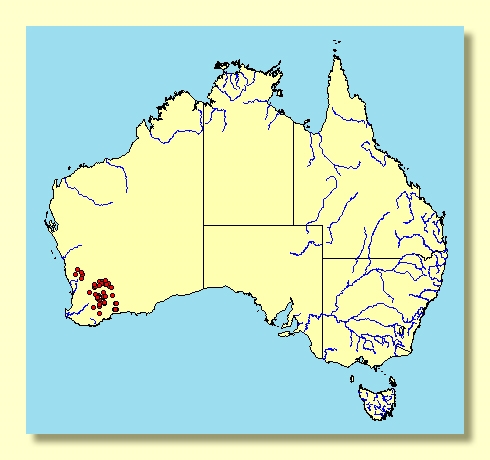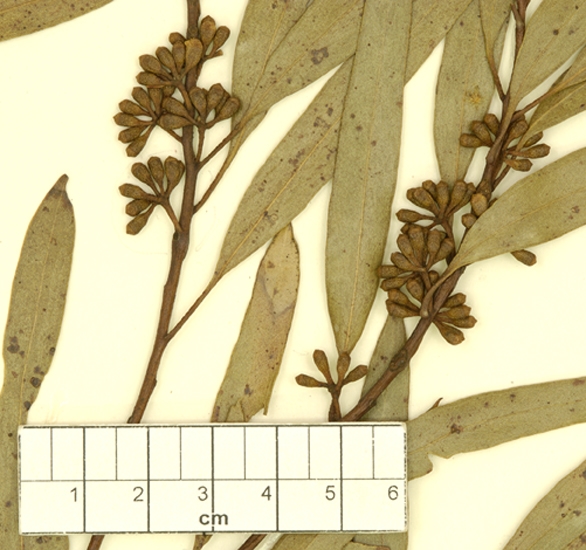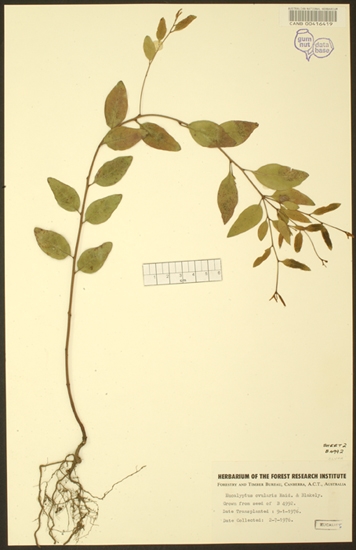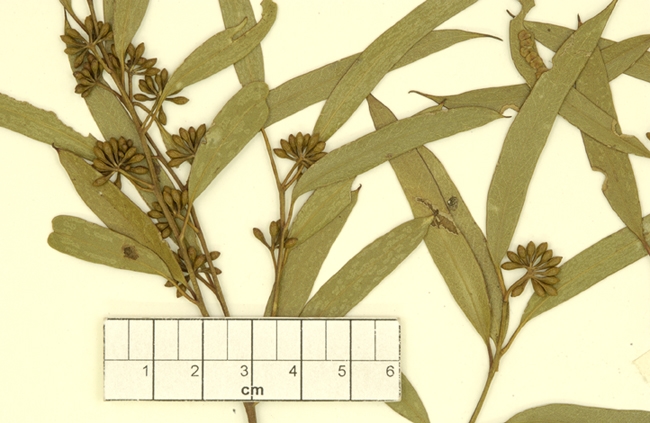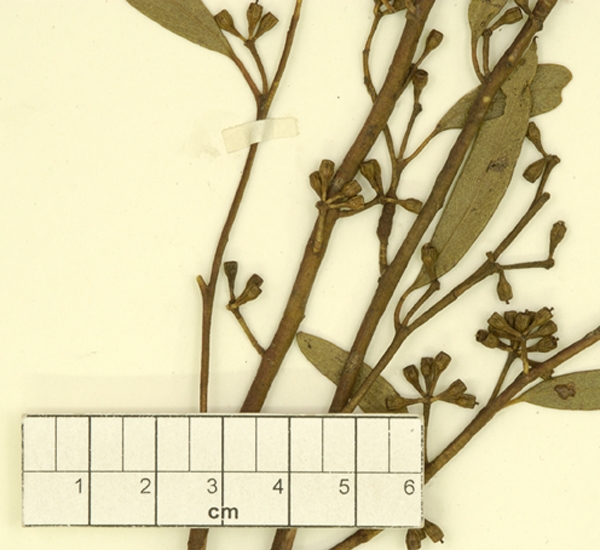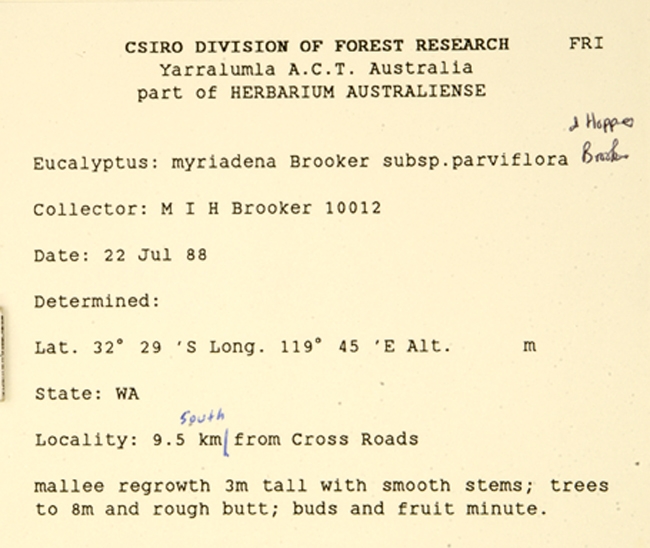Eucalyptus | Symphyomyrtus | Dumaria | Ovulares
Euclid - Online edition
Eucalyptus myriadena
Bark rough and coarsely flaky, grey-brown to grey-black usually for only about half of trunks then smooth above, bronze-grey and coppery.
Branchlets with oil glands in the pith.
Juvenile growth (coppice or field seedlings to 50 cm): not seen.
Adult leaves alternate, petioles 0.5–1 cm long; blade linear to narrowly lanceolate, 5–10 cm long, 0.6–1.2 cm wide, base tapering to petiole, margin entire, apex finely pointed, concolorous, very glossy, green, side-veins acute, reticulation usually obscured by numerous island oil glands, intramarginal vein usually visible.
Inflorescence axillary unbranched, peduncles 0.5–1.4 cm long, buds 9 to 13, pedicellate, pedicels 0.1–0.4 cm long. Mature buds narrowly cylindrical (0.3–0.7 cm long, 0.15–0.3 cm wide), scar present, operculum conical to rounded (0.1–0.3 cm long), stamens inflexed, anthers oblong, versatile, dorsifixed, dehiscing by longitudinal slits, style long and straight, stigma blunt, locules 3, the placentae each with 4 vertical rows of ovules. Flowers white.
Fruit pedicellate, pedicels 0.1–0.4 cm long, narrowly cylindrical to barrel-shaped, rarely narrowly obconical, 0.3–0.6 cm long, 0.3–0.4 cm wide, disc descending vertically, valves 3, enclosed.
Seeds pale honey-brown, 0.5–1.3 mm long, flattened ovoid, dorsal surface shallowly reticulate, hilum ventral.
Cultivated seedlings (measured at ca node 10): cotyledons reniform; stems rounded in cross-section; leaves always petiolate, opposite for 6–8 nodes then alternate (sometimes reverting to opposite for a few nodes), ovate to lanceolate, 3–7.5 cm long, 0.8–2.2 cm wide, dull, grey-green to green.
Flowering has been recorded in January, April, August and October.
A rough-barked tree endemic to Western Australia, widely distributed in the wheatbelt and goldfields from Coorow south and east to Newdegate and Ravensthorpe extending to Southern Cross, Bullfinch and Coolgardie, preferring clay flats in the vicinity of salt lakes. Its leaves are glossy, green and have numerous oil glands obscuring the venation.
Eucalyptus myriadena belongs in Eucalyptus subgenus Symphyomyrtus section Dumaria because the buds have two opercula, stamens are strongly inflexed, ovules are in four rows on the placentae and cotyledons are reniform. Within section Dumaria it belongs to a small subgroup of nine closely related species which together constitute series Ovulares. The series is further diagnosed by glandular pith, cuboid anthers, and seeds with a brown shallowly and clearly reticulate dorsal seedcoat.
Some of the species in series Ovulares are completely smooth-barked (E. cyclostoma, E. cylindrocarpa, E. exigua and smaller plants of E. oraria) while others (E. aequioperta, E. baudiniana, E. comitae-vallis, E. myriadena and E. ovularis) have rough bark over at least part of the stems.
E. myriadena is closely related to E. baudiniana which is distributed further north to the Kalbarri area and differs by the more distinct leaf venation, fewer oil glands and larger buds and fruit. The two species appear to intergrade north of Moora. E. myriadena differs from E. ovularis in having buds tapering at the base (not slightly dilated) and fruit cylindrical or slightly barrel-shaped. E. aequioperta has ovoid buds and more or less obconical fruit.
E. myriadena appears to be salt-tolerant and may be useful in salinity reclamation.
E. myriadena subsp. parviflora, a small fruited form with fruit 0.25–0.3 cm diameter and restricted in distribution to the Hyden Scrub near Forrestania Cross-roads, has been placed in synonomy within E. myriadena, as the size of the fruit does not fall significantly outside the accepted variation for this group.




